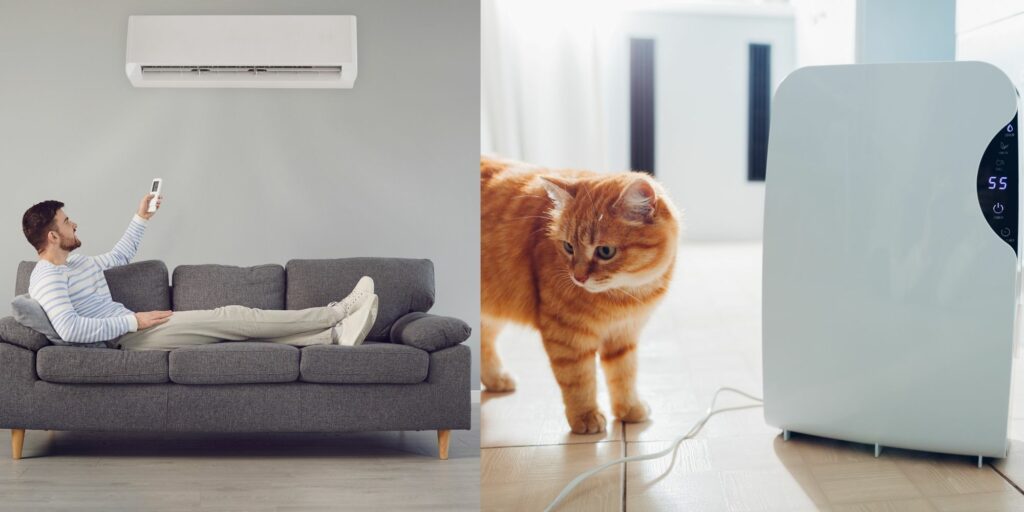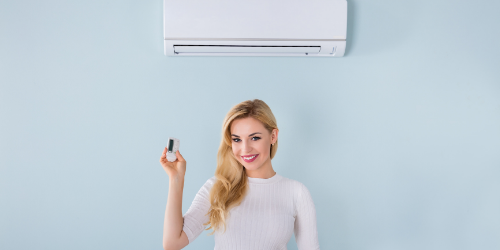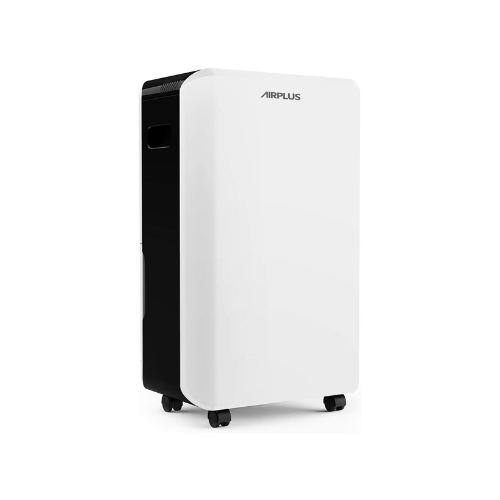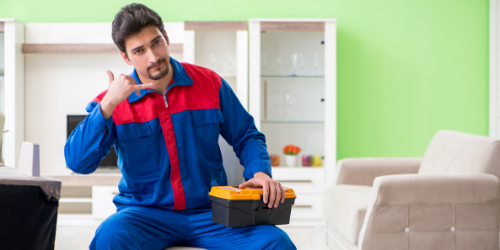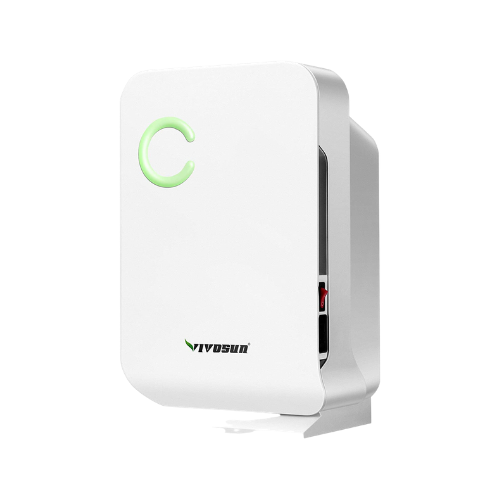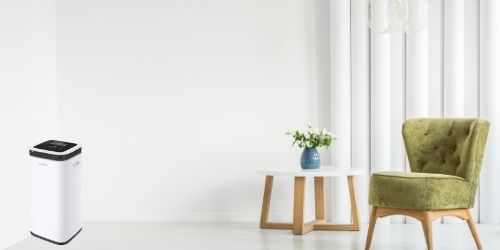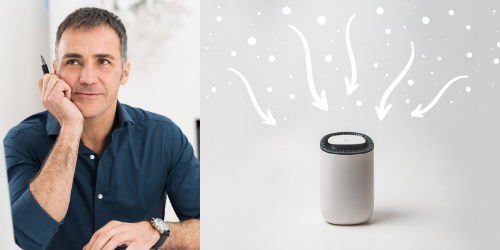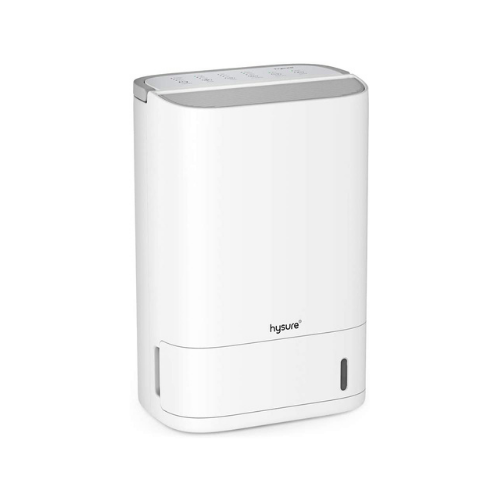Dehumidifier on floor or up high?
3 Key Takeaways:
🚀 Dehumidifier placement matters for it to work efficiently in maintaining the relative humidity level.
🚀 It is essential to keep high humidity under check, be it a large room or a small room.
🚀 If you are planning to place the dehumidifier on an elevated area, it can be placed at 2 to 3 feet off the floor.
Dehumidifiers are great devices that help one to keep their living space protected against the damage of excess moisture. It can be a commercial space, an unused basement barely visited crawl space, etc. Any humid place is not good for a home. Be it a large room or a small room, it is essential to keep high humidity under check. Ensuring the dehumidifier works efficiently in maintaining the relative humidity level does not just stop with the purchase and maintenance, the dehumidifier placement matters!
This is exactly what we will discuss in this post. We will learn how to place a dehumidifier to remove excess moisture effectively, should you place a dehumidifier on the floor or high up, which placement for a whole-house dehumidifier will help it to draw air easily, and more!
Before we head to knowing about dehumidifier placement, let us quickly run through how dehumidifiers have an impact on the high humidity level in the atmosphere. Dehumidifiers draw in moist air from the surroundings (including stagnated water on the carpet or separated wood floors), run the air over cool evaporator coils, extract the moisture from the air, and collect it as water by the process of condensation.
Removing this excess amount of moisture content from the air will reduce the humidity level that exists in the surrounding. Certain areas of the home might have a higher level of humidity than the others, because of the activities carried out in them. For example, a laundry room is constantly exposed to water and moisture in comparison to the bedroom or living room. Where you place dehumidifier in space has a direct impact on humidity control. Let’s keeping reading to know more.
Should a dehumidifier be elevated?

If you have plans to place a dehumidifier on a raised surface, professionals would suggest you rethink the idea. Unless it has been advised to place the dehumidifier on an elevated platform, it is usually not recommended to do so. It only makes sense to have the dehumidifier placed as close to the air moisture source (or damp air or water source).
Keep the reason for the problem in close proximity to the dehumidifier for it to function efficiently. Unless there is no reason to have the dehumidifier placed anywhere close to the source of moisture, like the area is very small or there is an electrical outlet close by; in this case, you can place the dehumidifier on an elevated place where it can still remove moisture from the air and its environment. As much as getting the right size dehumidifier in proportion to the room size matters; it is equally essential to focus on the right dehumidifier placement.
How high off the floor should a dehumidifier be?
If you are planning to place the dehumidifier on an elevated area, it can be placed 2 to 3 feet off the floor. Sometimes, when you use a portable dehumidifier, it might be moved to the kitchen or even used as a bathroom dehumidifier.
Most people who make use of a portable dehumidifier in the kitchen, place it over the kitchen sink area which is the source of high humidity there. It is important to consider that dehumidifiers work even at a raised position, but that will depend on their capacity.
What to consider before placing a dehumidifier?
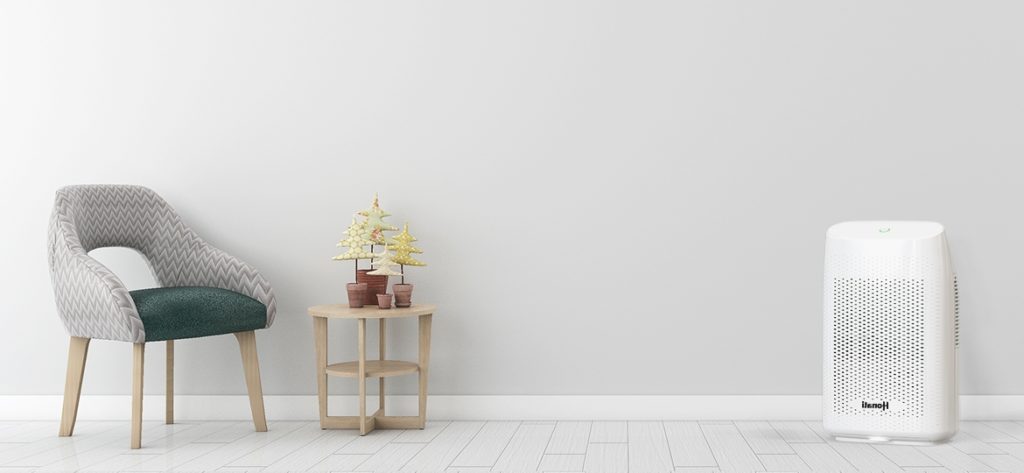
The locations where devices are installed are crucial for their performance. Especially when it comes to appliances that have to bring about an alteration in the temperature, moisture level, or relative humidity level of the area they are placed in. There are many factors that one needs to consider in dehumidifier placement.
The right size dehumidifier, the capacity of the device to control the excess humidity level in the room; whether the appliances are small room dehumidifiers that can remove excess moisture in just one room, or whole house dehumidifiers that can assure you to handle humidity problems across the entire home, how often the routine maintenance is required for the machine, the floor drain facility available in the room, the noise level the dehumidifier makes, etc.
If you are unsure about the right size, please select one that’s the most suitable for you from the options below:
Small rooms (up to 250 square feet):
Eva-Dry E-333 Renewable Mini Dehumidifier
Pro Breeze Electric Mini Dehumidifier
hOmeLabs Small Space Dehumidifier
Medium-sized rooms (Upto 1500 square feet):
Frigidaire FFAD2233W1 Energy Star Dehumidifier
hOmeLabs 1,500 Sq. Ft Energy Star Dehumidifier
Midea 1,500 Sq. Ft. Energy Star Certified Dehumidifier
Large rooms (upto 4500 square feet):
hOmeLabs 4,500 Sq. Ft. Dehumidifier
Kesnos 5000 Sq. Ft Large Dehumidifier
Frigidaire 50 Pint Dehumidifier
Make sure that the size of the dehumidifier depends on factors such as the level of humidity, the room’s insulation, and the number of people in the room. It’s important to choose a dehumidifier that is correctly sized for the specific room and conditions it will be used in.
All of these factors need to be considered before you install or place the dehumidifier in the room. Here are a few other specific details worth discussing in dehumidifier placement.
a. Provide good airflow
Dehumidifiers work better when there is unobstructed airflow. Removing objects around the air filter location will ensure that the dry air, free from moisture, that is coming out of the device can enter the room easily. Likewise, the moist air from the room should also enter the device without any obstruction. For this to occur, one has to ensure that the dehumidifier placement supports this. Remove things like furniture that will block the air flow, in and out of the dehumidifier. Place the dehumidifier a couple of inches away from the wall and check the dehumidifier regularly if the air flow is taking placing without hindrance.
A central location for the device is ideally recommended to have better control over higher relative humidity levels. From a center position, the machine can draw air easily into it, and send back the moist free clean, and dry air across the room. In a small room, it will be easier to circulate air. However, for large rooms the position of the dehumidifier matters for better performance and humidity control.
b. Avoid near dust, lint, and air particles sources
DO NOT place the dehumidifier close to any source of air pollution. This will not alone damage the air filters, but they will also spread the allergens across the entire room. Clogged air filters will also draw out more energy since they stress the performance of the device.
Check the dehumidifier regularly to make sure that it is not close to allergens like air particles, dust-filled areas in a basement, lint, animal bed, dryer vent in the laundry room, sawdust in a workshop, cracked ceilings with cement dusting in crawl spaces, etc.
c. Find easy drainage to empty
Dehumidifiers come with a built-in pump system or with a tank reservoir that has to be emptied manually. Where you place the dehumidifier must allow easy access to empty the water collected when they remove excess moisture from the air. If the dehumidifier model has a removable water tank, you must chek if the unit’s placement has enough space to remove and fit the tank back inside.
If you have a built in pump, you must ask the question, ‘Is the position of the dehumidifier and the home’s structure convenient to allow easy drainage of the collected water?’. You can place the dehumidifier on an elevated place like the kitchen sink for example, to allow gravity to handle the drainage. Do not forget to check that the drainage is at a safe distance from any electrical outlet.
Dehumidifier placement- Upstairs or Downstairs?
Depending on the room humidity across the home’s structure, one can decide if having a dehumidifier upstairs will help. In some homes, there is higher relative humidity even on the first floor, in places closer to the attic and crawl spaces. In such cases, a dehumidifier upstairs or closer to the stairs will help. Having a dehumidifier as close to the moisture source and dampness in the ground as possible is best recommended.
The unused basements, laundry rooms, kitchens, bathrooms, etc., are moist areas in a home that will also need regular dehumidification. If you cannot have a portable dehumidifier or whole house dehumidifier to cover the entire space, it is better to install a dehumidifier into the HVAC system. This can cover the laundry rooms, kitchens, basements, crawl spaces, indoor pool areas, and all areas of the home. Forget the need to place a dehumidifier in every other room by simply installing the device into the HVAC system.
Does a finished basement need a dehumidifier?

Yes! All basements are sources of mold and mildew growth, owing to their increased humidity level. To keep the humidity level under control, be it in a finished basement or unfinished basement; dehumidifiers are essential.
Some assume that an exhaust fan can get the job done, but unfortunately No! Cold weather in the basements can be rough, therefore check if the dehumidifiers purchased for the basement have the capacity to withstand the cold weather, apart from just looking at the square feet coverage. Relative humidity should be maintained at 50% or under, even in an unfinished or finished basement.
FAQ Section
1. Placement of a dehumidifier in 2 story house?
Dehumidifier placement in a house with more than one floor should always depend on the floor that most need it. If the first floor is exposed to a humidity problem greater in comparison to the second floor, then you should place a dehumidifier on the first floor. As far as temperature and moisture content in the air goes, place the dehumidifier in the floor that is coldest (or filled with cold air), and the floor with the highest humidity content and moist air.
2. Humidity difference between floors?
It is normal to notice a difference in the humidity level between two floors. The humidity level that you experience on the first floor could be lesser in comparison to what you have on the second floor. It is because the warm and humid air is less dense than the hot dry air. This difference makes the hot dry air rise. Due to this, if you experience that the humidity level in the second floor is higher than the first floor by 1 – 5%; this is normal.
3. Is humidity higher upstairs or downstairs?
The chances are high that the relative humidity would not be evenly distributed in a home with multiple stories. The home’s structure will be different on each floor, and these factors will influence the humidity level in them as well.
For example, the temperature, square feet area, height; are some factors that contribute to increased humidity level upstairs. This is why most homes focus on dehumidifiers upstairs and encounter a humidity problem in them than many basements. With altitude you will have differences in temperature, and also the square feet area of a second floor will be more than the first floor.
4. Should you open windows when using a dehumidifier?
Although adequate ventilation is necessary to maintain good health and well-being, for both us and the home, it is not recommended to have the windows and doors open while you run a dehumidifier.
Dehumidifiers that run with open windows and doors, will draw in allergens from the outside and clog their filters. Continual air flow from the outside will also hinder the performance of the unit. There will be a disruption in monitoring the relative humidity that exists in the room.
5. Why do dehumidifiers have to be upright?
Did you know that experts suggest that you have the dehumidifiers have to be set upright for 24 hours before you turn the unit on? This is because the compressor contains oils, and it is recommended that you allow the oils to settle in before you run the unit.
Setting the device upright before you place a dehumidifier in its final location will ensure the oils settle in and the unit’s performance in moisture removal is enhanced.
6. Does indoor humidity rise with lower temperature?
It is true that relative humidity will rise when the temperature is decreased. This has been linked to the air being unable to take in or absorb any more moisture from the atmosphere, since it is already heavily laden with moisture and there is no let out.
Most basements that are left unattended with dehumidifiers during colder climates or winters, experience troubles with their units. It is important that one pays attention to the unit and set the indoor relative humidity to be maintained by the device appropriately. It is recommended that the indoor humidity level be maintained within 30% to 40% to get a comfortable environment. The air within this range will be breathable and at the same time keep your property safe.
Wrapping Up
Hope the post helped in understanding the difference between placing a dehumidifier downstairs or upstairs, and the influence of altitude on a dehumidifier unit. Read thoroughly and acquire all the information on how to place a dehumidifier for basements, crawl spaces, laundry rooms, before you install one into your home for humidity control. Understand the importance of how the location of where you place the dehumidifier has an impact.

About The Author
Olivia — a self-confessed air quality addict — is a home climate enthusiast, fresh air advocate, and someone with deep personal experience and knowledge about mold extermination. Her work was mentioned in countless notable humidity publications. Previously she was an editor at Mold Remediation.
